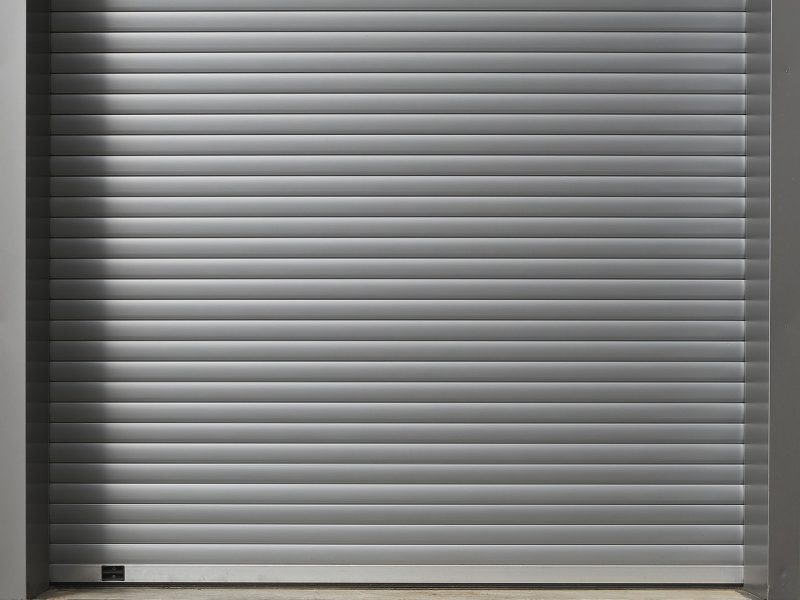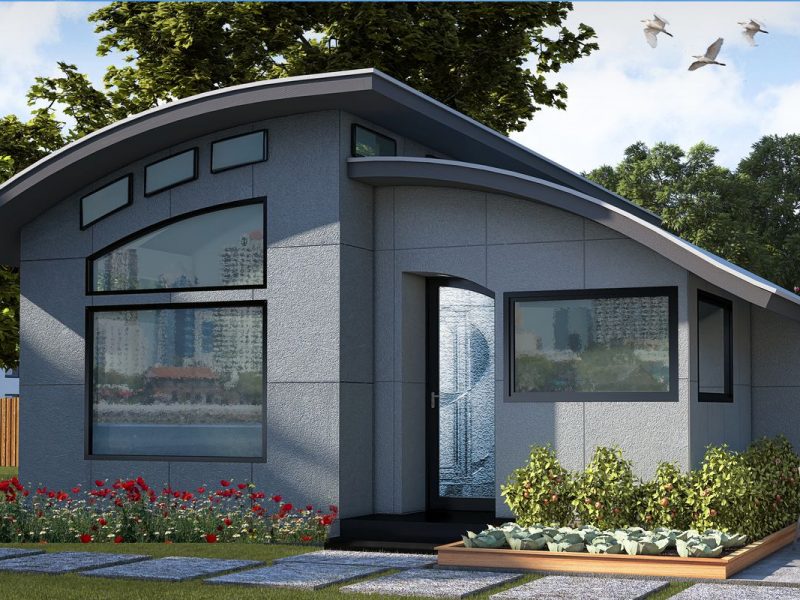
Renovating the Old House? Does it Cost Too much or Just a Myth?
At the point when you’re prepared to put your home available into the market, it’s enticing to succumb to the redesign bug. You know the one: You’ve needed to re-try that tile flooring in the kitchen, however, you’ve never set aside a few minutes. Why not do it now? Or then again, you watch those home structure shows and push, “We can do this. We need an end of the week to paint each room in the house, and we can add much more to our asking cost.”
Fast technological changes in the construction business, and the developing growth of codes and consistent guidelines, the deep-rooted question of remodeling versus new development has gotten progressively significant. In any case, which alternative is the ideal decision for your property? On a limited financial plan, are redesigns consistently, the more practical, better choice? Is new development unmistakably more costly than rehabbing a current space? Before settling on this significant choice, we’re here to expose four myths in regards to renovations.
Myth #1: Old Homes Need More Expense More to Maintain
The stereotypical cash pit is a creaky old house that is in a consistent condition of disrepair. Be that as it may, our study found that higher home age doesn’t foresee higher emergency spending on things like defective rooftops and bombing heaters. It’s the inverse really, with property holders spending a normal of $3.70 less in crisis spending every year consistently their house was fabricated. As such, the owner of a 100-year-old house will spend about $370 less on crisis spending than the proprietor of a new home.
How owners of older homes have significant issues— updating the warming gear, for instance, or putting on another rooftop. A home manufactured twenty years back, then again, maybe just about due for these improvements.
Takeaway: older homes can perform like new if they’re correctly maintained.
Myth #2: Renovation is Faster, Hassle-Free and Less Costly
Depending upon the degree of the redesign, it’s conceivable to be quicker or more affordable; however, no construction project is hassle-free. There are such a huge number of questions and potential for shocks when working with a current structure. You have no clue about what may be holing up behind the walls – asbestos, form, terrible wiring, helpless protection – and once you discover it, you need to fix it. Updating old frameworks or decreasing poisonous materials is expensive and tedious and is frequently significantly more muddled than putting in new structures in new development.
If you intend to include a new floor or extend the impression, you might need to reexamine. The new area will probably put a strain on existing frameworks, for example, HVAC and electrical. Regardless of whether you choose to update these frameworks, you’re although everything stayed with old ventilation work, plumbing, and funnels except if you gut the structure. Every circumstance is remarkable, yet it’s frequently, to a lesser extent, a cerebral pain to crush a current structure and begin once again without any preparation. New development and structure innovations currently empower contractual workers to finish new structures a lot quicker and more proficiently than a redesign of a current property.
Myth #3: The Kitchen is the Most Frequently Remodeled Room
That used to be the situation. As per our study, the restroom has accepted the job of the most renovated room. Of the almost 600 individuals who said they finished a room redesign, 58% revamped a washroom, contrasted, and 32% handled the kitchen.
Some portion of the explanation could just be the way that there are a higher number of restrooms out there than kitchens. In any case, that is continuously valid. An almost certain driver is the consistent uptick in first-time homebuyers (Millennials have been the biggest homebuying partner for quite a long while at this point). With a considerable lot of these new proprietors in prime family-raising mode, having multiple updated bathrooms is a must.
Myth #4: Moving Your Operations to a New Construction is Always Better
Remember three mantras of real estate: area, area, and area. Cautiously break down the upsides and downsides of your immediate area to decide the best activity plan. A few areas can’t be made without any preparation. Staying could wind up being progressively crucial to you over the long haul, regardless of whether task costs are increasingly costly for the short term.
The most significant thing to comprehend from this is every circumstance is one of a kind and presents its arrangement of difficulties. At times remodels are the better and increasingly reasonable alternative; however, that is not generally the situation. Doing your examination and being educated is necessary for a fruitful task and will make for a much smoother and less distressing experience.
Myth #5: Millennials are All About Appearances
That may be valid with their Instagram feeds, yet Gen Yers are exceedingly esteem driven with regards to their homes. In our overview, Millennials were more than twice as likely as Generation X to list increasing the value of their home as a critical inspiration for home improvement projects, and around three to multiple times as feasible comparative to baby boomers and the silent generation
The laser focus around ROI is expected because such a significant number of Millennials arrived at the homeownership station life in a harder money related circumstance than earlier ages, because of understudy obligation, stricter home loan guidelines, and rising home costs.
Home Renovation Costs
The specific expense of remodeling your living space will rely upon its square feet, the district you live in, and precisely the amount of cosmetic touch up your home needs. Yet, to get an unpleasant thought, here is the estimate of what the typical expenses related with various redesigns resemble:
- Low ($25,000 to $45,000): A little rebuild would almost certainly incorporate inside and outside work of art, small fixes (like resurfacing cupboards), and new arranging.
- Medium ($46,000 to $75,000): An increasingly included rebuild would incorporate the ease redesigns above and a total kitchen redesign (contingent upon apparatuses), and minor bathroom and garage
- High ($76,000 and up): Low-and medium-cost upgrades, fixing any establishment issues, and rooftop and sewer line issues.
Post a Comment
You must be logged in to post a comment.






3reprieve
2cannonade
1laudanum
2disorderly
writing editing services
a dissertation https://professionaldissertationwriting.org/
writing dissertation proposal
dissertation defense https://professionaldissertationwriting.com/
dissertations writing
dissertation help ireland editing https://helpwithdissertationwritinglondon.com/
paper writing service
what is a dissertation paper https://dissertationhelpexpert.com/
dissertation methodology
average dissertation length https://accountingdissertationhelp.com/
best dissertation writing services uk
uk dissertation writing help quotes https://examplesofdissertation.com/
creative writing course in mumbai
dissertation template https://writing-a-dissertation.net/
english dissertation help
buy dissertation writing services https://bestdissertationwritingservice.net/
writing editing service
dissertation printing https://businessdissertationhelp.com/
help with dissertation
writing a dissertation literature review https://customdissertationwritinghelp.com/
dissertation help near me
thesis and dissertation writing https://writingadissertationproposal.com/
dissertation writing services uk
dissertation proposal sample https://dissertationhelpspecialist.com/
buy dissertations
data analysis dissertation help https://dissertationhelperhub.com/
writing your dissertation in
writing your dissertation in a week https://customthesiswritingservices.com/
virgin online casino
nj online casino no deposit bonus https://download-casino-slots.com/
real casino slots online
lady luck casino online https://onlinecasinofortunes.com/
san manuel online casino login
jack casino online https://trust-online-casino.com/
drake online casino
was bedeutetwaygern online casino https://onlinecasinosdirectory.org/
free online casino slots
free online casino slot games https://9lineslotscasino.com/
mgm online casino bonus code
best canadian online casino https://free-online-casinos.net/
my choice casino online
las vegas usa online casino https://internet-casinos-online.net/
online casino video poker
online casino paysafecard 10€ https://cybertimeonlinecasino.com/
best online casino bonus
best us online casino https://1freeslotscasino.com/
caesars online casino pa bonus code
casino online nj https://vrgamescasino.com/
resorts online casino bonus codes
real money online casino texas https://casino-online-roulette.com/
betmgm online casino
ocean casino online https://casino-online-jackpot.com/
online casino live
jackpotcity online casino https://onlineplayerscasino.com/
hard rock casino online
instant withdrawal online casino usa 2021 https://ownonlinecasino.com/
betrivers casino online
casino online com https://all-online-casino-games.com/
goldennugget online casino
bonus online casino https://casino8online.com/
best free vpn download
chrome free vpn https://freevpnconnection.com/
good vpn free
free safe vpn https://shiva-vpn.com/
free netflix vpn
vpn gratis https://freehostingvpn.com/
best vpn service review
most popular vpn service https://ippowervpn.net/
top rated vpn services
the best vpn free https://imfreevpn.net/
express vpn
best mobile vpn for windows https://superfreevpn.net/
best vpn for firefox
best 100% free vpn https://free-vpn-proxy.com/
what does a vpn do
free unlimited vpn for mac https://rsvpnorthvalley.com/
gay dating naked vh1
gay men dating sites missouri https://gay-singles-dating.com/
free dating webstes for gay men
gay dating site/crosword https://gayedating.com/
gay dating us marine
gay teen dating https://datinggayservices.com/
sites adult
world best dating sites https://freephotodating.com/
matchmaking services melbourne
mature nl free https://onlinedatingbabes.com/
free date sites
adult dating married https://adult-singles-online-dating.com/
online dejting
topchatsites https://adult-classifieds-online-dating.com/
free dating sites no fees
free good https://online-internet-dating.net/
local dating sites absolutely free
amature dating co https://speedatingwebsites.com/
dating app
single seniors dating sites https://datingpersonalsonline.com/
best online dating and chatrooms travel
date match site https://lavaonlinedating.com/
best dating web
dating game https://freeadultdatingpasses.com/
chat singles
plentyoffish dating sites https://virtual-online-dating-service.com/
online datings
beste dating site https://zonlinedating.com/
online free dating service
best internet dating service https://onlinedatingservicesecrets.com/
golden nugget online casino promo code
hollywood casino online pa https://onlinecasinos4me.com/
sugarhouse casino online pa
top online casino real money https://online2casino.com/
888 casino online support
hallmark casino online https://casinosonlinex.com/
gay chat nebraska
gay chat roulette https://newgaychat.com/
gay vid chat
gay phone chat line phone numbers https://gaychatcams.net/
fcn chat gay
gay sex chat no registration https://gaychatspots.com/
gay dot com chat room
free gay chat rooms online https://gay-live-chat.net/
chat aveneu gay
gay videeo chat https://chatcongays.com/
gay chat rooms mason city ia
ring central gay pnp slam 2019 room chat code https://gayphillychat.com/
gay couple on chat video
gay chatroulette chat https://gaychatnorules.com/
boys gay chat
free live gay chat rooms https://gaymusclechatrooms.com/
free gay chat roulette
gay priest chat https://free-gay-sex-chat.com/
gay chat avenue new version
free chat for gay curius people https://gayinteracialchat.com/
buy papers online for college
write my paper college https://term-paper-help.org/
custom writing paper service
buy cheap papers https://uktermpaperwriters.com/
buy college paper
write my paper college https://paperwritinghq.com/
custom papers online
help writing papers https://writepapersformoney.com/
buy academic papers
paper help writing https://write-my-paper-for-me.org/
write my statistics paper
buy custom papers online https://doyourpapersonline.com/
custom paper writers
write my persuasive paper https://top100custompapernapkins.com/
custom paper writing
ghost writer college papers https://researchpaperswriting.org/
academic paper writers
write my college paper for me https://buyessaypaperz.com/
best paper writers
pay to do paper https://mypaperwritinghelp.com/
college paper help
write my paper for me fast https://papercranewritingservices.com/
custom written college papers
english paper help https://premiumpapershelp.com/
help writing paper
writing services for college papers https://ypaywallpapers.com/
pay someone to write your paper
need help writing a paper https://studentpaperhelp.com/
3hypnotized
1constant
coursework writing help
coursework https://brainycoursework.com/
database coursework
coursework project https://courseworkninja.com/
degree coursework
differential equations coursework https://writingacoursework.com/
coursework master
degree coursework https://courseworkinfotest.com/
coursework writing services
coursework help uk https://teachingcoursework.com/
degree coursework
coursework science https://buycoursework.org/
senior dating site
meet singles online https://freewebdating.net/
senior bi log in
best free online meeting sites https://jewish-dating-online.net/
flirtbee
plentyoffish login https://jewish-dating-online.net/
totally free dating sites near nelson
deting https://free-dating-sites-free-personals.com/
free web girl
dating flirt site free https://onlinedatingsuccessguide.com/
online free dating personals for singles
tinder dating site free search https://onlinedatinghunks.com/
sex dating site
date match site https://datingwebsiteshopper.com/
dating for free
dating for singles https://allaboutdatingsites.com/
online dating women
christian dating https://freedatinglive.com/
singles ads
tinder dating site pictures women https://freewebdating.net/